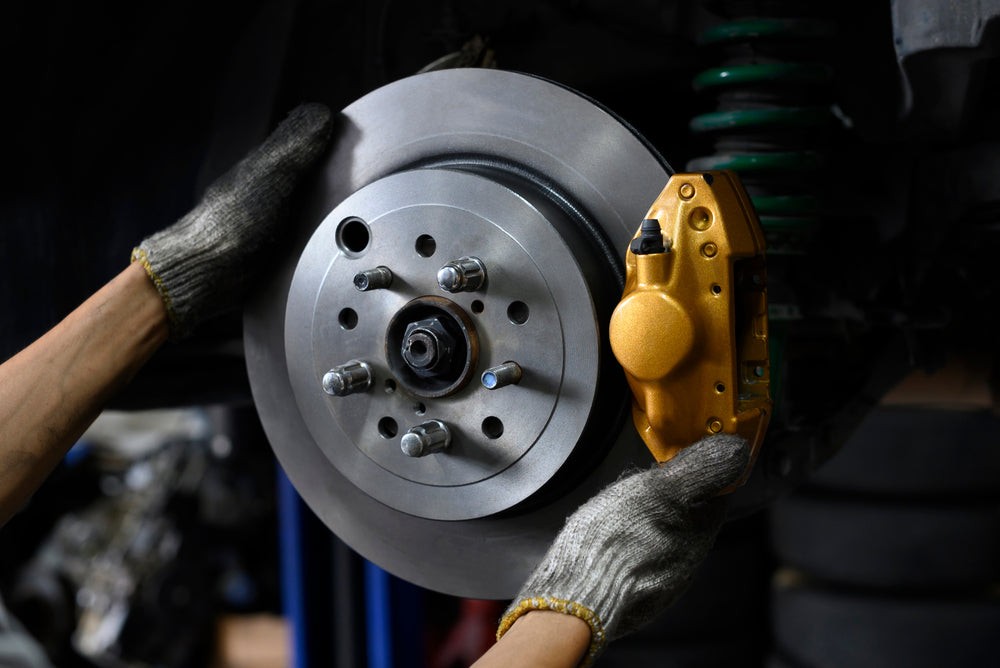Modern vehicles are increasingly equipped with electronic parking brakes (EPB), a sophisticated system that enhances safety and convenience compared to traditional hand-operated brakes. While EPBs offer numerous advantages, they also introduce new complexities when it comes to maintenance and repair, particularly brake pad replacement and system adjustments. This is where an Obd Scanner With E Parking Brake Adjustment functionality becomes indispensable.
 Electronic Parking Brake (EPB) system requiring OBD scanner for adjustment
Electronic Parking Brake (EPB) system requiring OBD scanner for adjustment
Understanding Electronic Parking Brake (EPB) Systems
An electronic parking brake, often referred to as an e-brake or electric parking brake, is an advanced system that replaces the conventional manual handbrake lever or foot pedal. Instead of relying on cables and levers, EPBs utilize electronic controls and actuators to engage and disengage the parking brakes. With a simple press of a button or switch, an electric motor or solenoid applies pressure to the brake calipers or activates a dedicated drum brake mechanism, securely holding the vehicle in place.
This electronic system offers several benefits. Firstly, it eliminates the need for manual adjustments that are typically required in mechanical parking brakes due to brake pad wear. EPB systems can automatically compensate for pad wear, ensuring consistent and reliable braking force over time. Furthermore, EPBs often integrate with other vehicle safety systems, providing features like hill-hold assist, which prevents rollback on inclines, and automatic brake hold for comfortable stop-and-go traffic situations.
Why Use an OBD Scanner for EPB Adjustment?
While electronic parking brakes offer enhanced convenience and safety, they require specialized tools for certain maintenance procedures, most notably brake pad replacement. In vehicles with EPB systems, the electronic calipers often need to be retracted into service mode before rear brake pads can be replaced. Attempting to replace brake pads without properly retracting the calipers can lead to damage to the EPB system and costly repairs.
This is where an OBD scanner with e parking brake adjustment comes into play. These specialized scan tools are designed to communicate with the vehicle’s electronic control unit (ECU) and safely retract the electronic parking brake calipers. By connecting an OBD scanner to the vehicle’s diagnostic port, technicians and even DIY enthusiasts can access the EPB system and initiate the caliper retraction process.
Beyond brake pad replacement, an OBD scanner with e parking brake adjustment capability can also be used for:
- EPB System Reset: After servicing the EPB system, a reset is often required to clear fault codes and ensure proper system operation.
- Calibration: In some cases, the EPB system may require calibration after component replacement or adjustment.
- Diagnostics: OBD scanners can read diagnostic trouble codes (DTCs) related to the EPB system, helping to pinpoint problems and guide repairs.
Choosing the Right OBD Scanner for EPB Service
When selecting an OBD scanner with e parking brake adjustment functionality, consider the following features:
- EPB Service Functionality: Ensure the scanner explicitly lists EPB service or electronic parking brake reset as a supported function.
- Vehicle Compatibility: Verify the scanner is compatible with your vehicle’s make and model. Some scanners offer broader vehicle coverage than others.
- Ease of Use: Look for a scanner with an intuitive interface and clear instructions for EPB service procedures.
- Additional Features: Many OBD scanners offer a range of other diagnostic and service functions beyond EPB adjustment, such as ABS bleeding, oil reset, and battery registration. Consider your overall needs when choosing a scanner.
Step-by-Step Guide to EPB Adjustment with an OBD Scanner (General Steps)
While the exact steps may vary depending on the specific OBD scanner and vehicle, the general process for EPB adjustment typically involves:
- Connect the OBD scanner: Plug the scanner into your vehicle’s OBD-II diagnostic port, usually located under the dashboard.
- Power on and identify vehicle: Turn on the ignition (engine off) and allow the scanner to power up and identify your vehicle.
- Navigate to EPB service function: Use the scanner’s menu to locate the EPB service or electronic parking brake function.
- Initiate caliper retraction (service mode): Follow the scanner’s prompts to retract the EPB calipers into service mode. This will typically involve pressing a button to start the process.
- Perform brake service: Once the calipers are retracted, you can safely proceed with brake pad replacement or other EPB system maintenance.
- Return calipers to normal operation: After completing the service, use the OBD scanner to return the calipers to their normal operating position. This may be labeled as “caliper extension” or “exit service mode.”
- Clear fault codes (if necessary): If any fault codes were generated during the process, use the scanner to clear them.
- Verify EPB operation: Test the electronic parking brake to ensure it is functioning correctly after the service.
Benefits of Using an OBD Scanner for EPB Adjustment
Utilizing an OBD scanner with e parking brake adjustment provides several key advantages:
- Safety: Properly retracting EPB calipers with a scanner prevents damage to the system and ensures safe brake service.
- Efficiency: OBD scanners streamline the EPB service process, saving time compared to manual methods (if available).
- DIY Capability: Equipped with a suitable scanner, DIY mechanics can confidently perform brake pad replacements and EPB maintenance at home, potentially saving on labor costs at a repair shop.
- Comprehensive Diagnostics: Beyond adjustment, OBD scanners offer valuable diagnostic capabilities for the entire EPB system.
In conclusion, as electronic parking brakes become increasingly prevalent, an OBD scanner with e parking brake adjustment is becoming an essential tool for both professional technicians and car enthusiasts. Investing in a quality scanner ensures you can properly maintain and service these sophisticated braking systems, contributing to vehicle safety and longevity.
